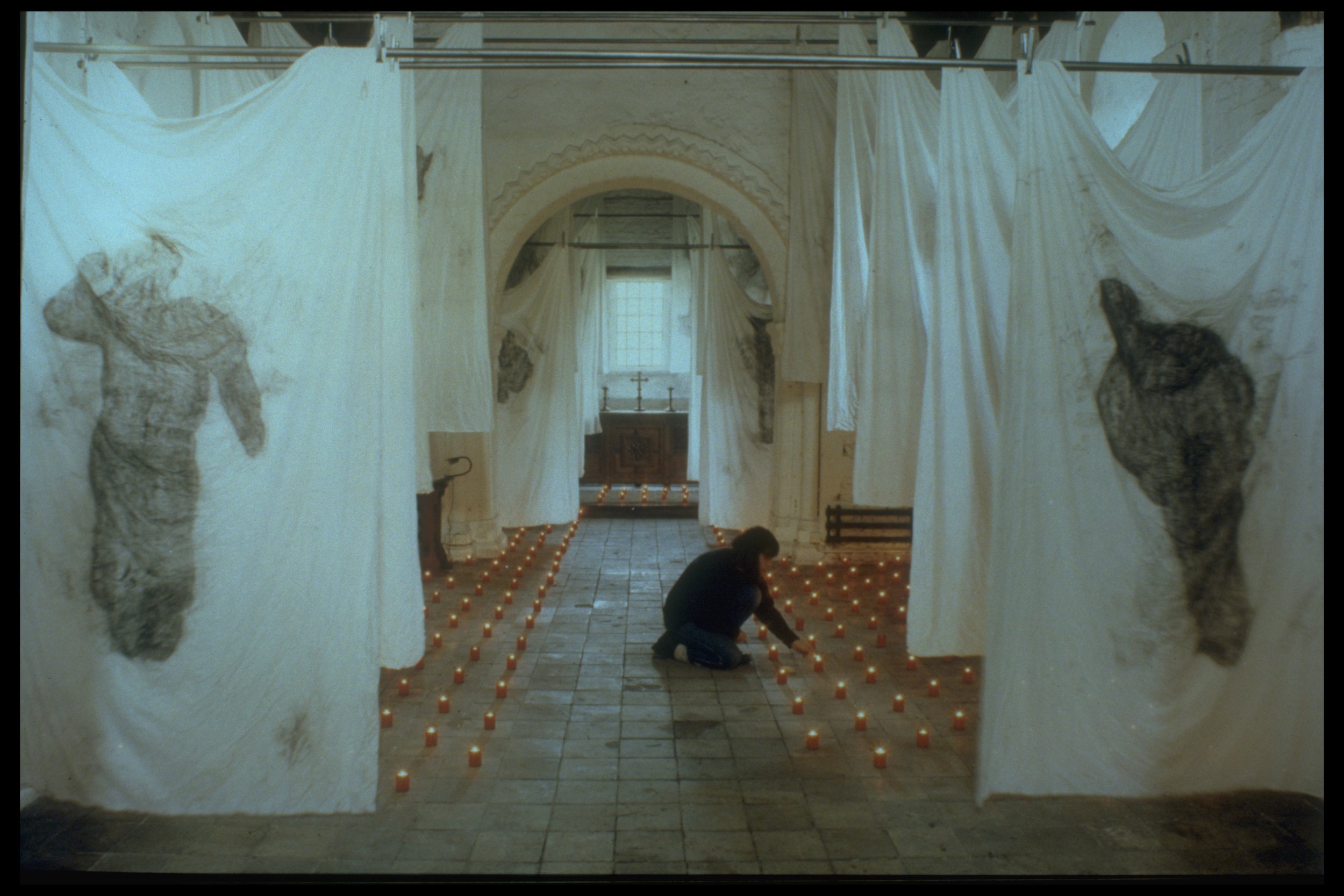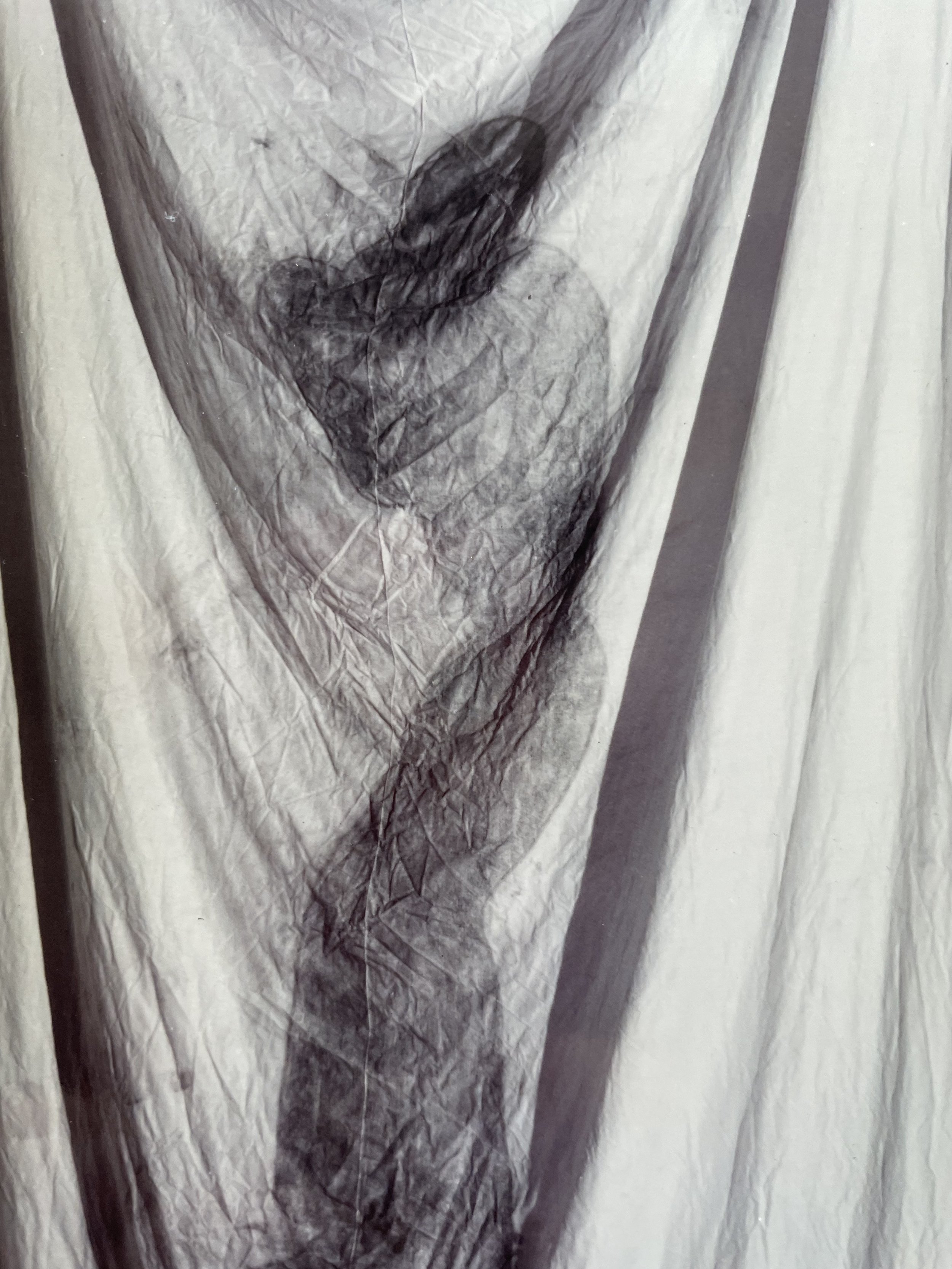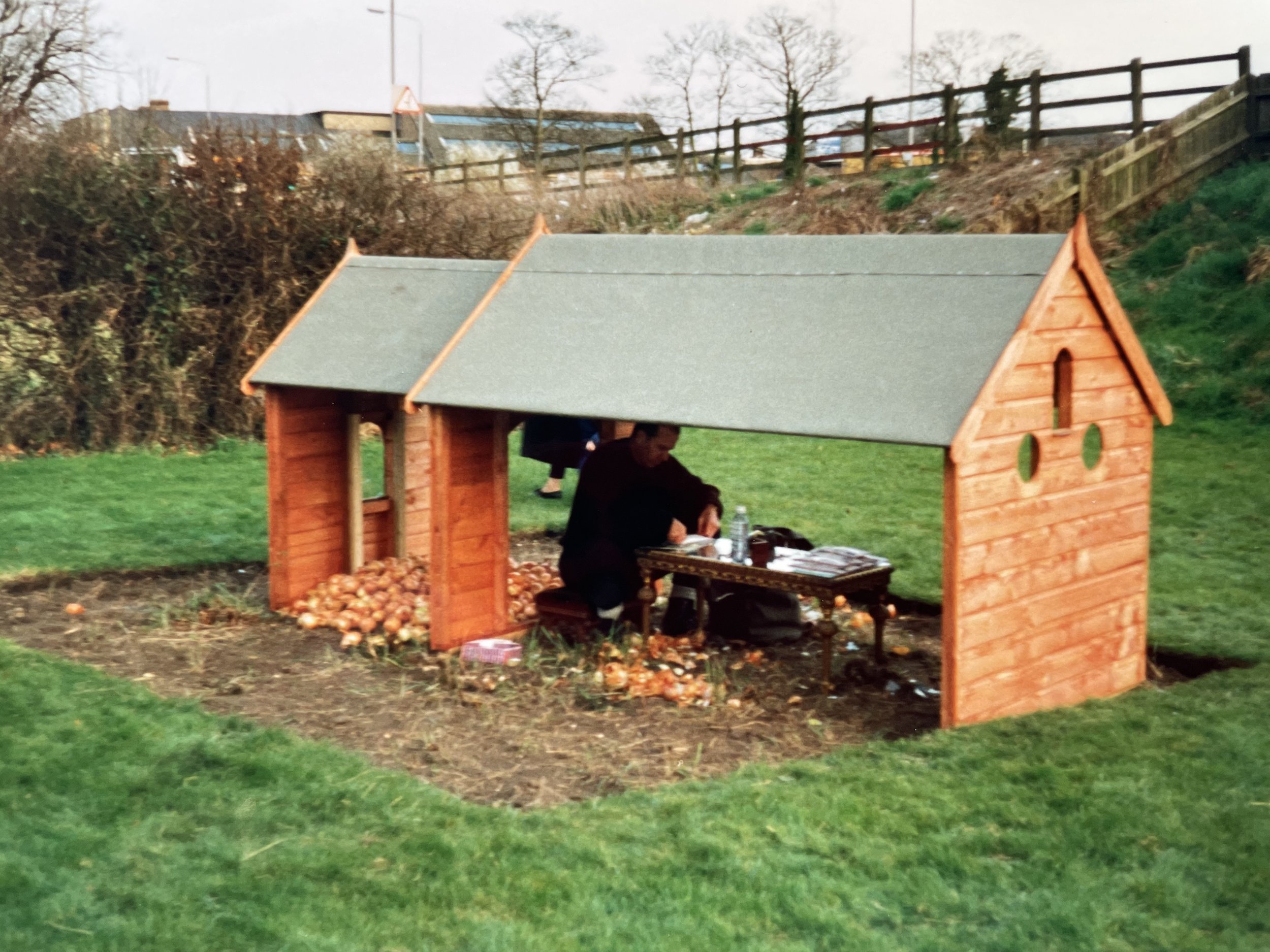THE ZWILLINGE PROJECT EPISODE 5 The LEPER CHAPEL
In the Zwillinge Project, the place is an integral part of the text rendering the performance unique and non-transferable. The artists 'converse with sites', the performance being the interaction of historical narratives of place, the audience's narratives regarding the contemporary positioning of the place, and the artists' existing and reactionary narratives when inhabiting the place.
One of the dominating narratives of the Leper Chapel is its function as a place of worship for the Leper Hospital established in the twelfth century. At this time the chapel was on the easternmost edge of medieval Cambridge. The care of disease was positioned faraway from the healthy self funding centre. The mental or physical distancing of tragedy and ill fortune is repeatedly referred to in the performance.
The James Bulger murder is perhaps so fascinating because of the media through which we learn of it, newspapers, books and television, creating such a safe distance between us, painting our nails in the living, and the actual event. The onions, the flowers, the condolences are all in fact without practical use. In some cases even money is of no use, or is too late to prevent tragedy. In this performance, unreal solutions are sent to unreal locations, perpetuating the gap between the safe and the unsafe, transferring, in Lavers' words, 'only the guilt'.
The replica chapel placed to the right in front of the building gives the audience the chance to view both the original and the reproduction simultaneously, a process perhaps similar to buying a model of the Eiffel Tower from a trader at the base of the Eiffel Tower. The reproduction allows us to see the whole image at once. To grasp its form in a way which is impossible with larger objects that demand us to negotiate them. The replica also highlights aspects of the original. Viewed from the steps leading down to it, surrounded by modern roads, houses and cars, the Chapel does resemble a toy. It has an unreal quality often found in the contrast of one element totalling differing from that of its environment.
The artists manage to make the observer re-aware of the chapel, and their relationship to it. Within this process of 'making strange' comes the possible space for art and the everyday. Within this performance, the 'real' space informs the artistic space, which then serves to heighten the awareness of the former.
25 Irish Linen Sheets, 300 red everlasting candles, charcoal lines around the bodies of 25 children, 1:5 replica of the chapel, onions, airmail envelopes, coins, a wreath, camera, hammer, two ruc sacs, a hot dog stall.
Performance presence: taking photographs, smashing windows, chopping onions, writing letters of condolence, dismantling replica chapel, lighting candles, reading newspaper, painting toe nails, interaction with viewers
additional performer - Tony Ella
Their treatment of performance also integrates the separation of performance behaviour and 'normal' everyday behaviour. Was the role of Kirsten Lavers' interacting with the audience any less of a performance than the two performers in their designated spaces?. The important point seems to be whether or not an action or a person is drawn attention to visually or is aware of being observed. The audience could interact with Kirsten, influencing her performance and contributing to it themselves, because she was not coded 'to be looked at', drawn attention to. The others, isolated through costume and specific insular tasks not involving the audience just each other, were therefore separated and observed. The act of observation creating a further distance between the subject watching and the performers being watched.
The problem of how to perform without alienating the audience is one that Lavers and Thompson have continually explored. How can you rid a performance of the theatricality that leaves an audience passively watching?. Even in site-specific work, which generally leaves the audience free to move where they like, creating the potential for interaction, it is still very hard as an audience member to actually do something that affects the event. The answer could be in changing people's perception of what a performance actually is. The meal shared by 35 audience members was a very real part of the performance: literally, as it involved the onions from the previous day; and conceptually, as it became an interactive site of discourse combined with a visual display of their previous work. If performance was viewed more experientiatially rather than a predominantly visual event, then the process and continuing effect of art could be found to contain as much importance as the performance itself, opening up the existing confines in which art is allowed to function.
One is never 'nowhere'. The space of the Leper Chapel is held in the ongoing discourse that surrounds it, from the Irish Sheets to the artists, to the local schoolchildren, to their traces on the sheets, to the audience's experience of them and the fact that I am writing about them and you are reading it.
Anna MacDonald








